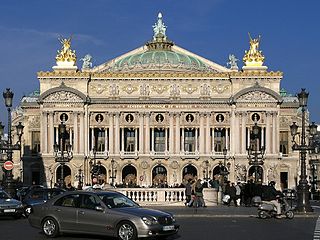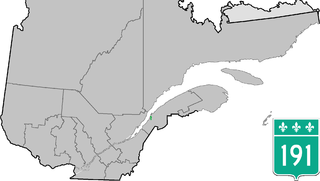| Rivière-du-Loup Town Hall | |
|---|---|
 | |
| General information | |
| Architectural style | Romanesque Revival |
| Address | 189 Lafontaine Street |
| Town or city | Rivière-du-Loup, Quebec |
| Country | Canada |
| Coordinates | 47°50′9″N69°32′12″W / 47.83583°N 69.53667°W Coordinates: 47°50′9″N69°32′12″W / 47.83583°N 69.53667°W |
| Opened | 1916 |
| Renovated | 1972-73 |
| Technical details | |
| Floor count | 2 |
| Design and construction | |
| Architect | Georges Ouiment |
| Main contractor | Lachance et Fils |
| Designated | 1984 |
| References | |
| [1] | |
Rivière-du-Loup Town Hall is the seat of local government in Rivière-du-Loup, Quebec, Canada. It is located at 189 Lafontaine Street.

In local government, a city hall, town hall, civic centre, a guildhall, a Rathaus (German), or a municipal building, is the chief administrative building of a city, town, or other municipality. It usually houses the city or town council, its associated departments, and their employees. It also usually functions as the base of the mayor of a city, town, borough, or county/shire.

Rivière-du-Loup is a small city on the south shore of the Saint Lawrence River in Quebec. The city is the seat for the Rivière-du-Loup Regional County Municipality and the judicial district of Kamouraska.

Quebec is one of the thirteen provinces and territories of Canada. It is bordered to the west by the province of Ontario and the bodies of water James Bay and Hudson Bay; to the north by Hudson Strait and Ungava Bay; to the east by the Gulf of Saint Lawrence and the province of Newfoundland and Labrador; and to the south by the province of New Brunswick and the U.S. states of Maine, New Hampshire, Vermont, and New York. It also shares maritime borders with Nunavut, Prince Edward Island, and Nova Scotia. Quebec is Canada's largest province by area and its second-largest administrative division; only the territory of Nunavut is larger. It is historically and politically considered to be part of Central Canada.
It was designed by architect Georges Ouimet in incorporating references to the Arts and Crafts Movement and the Second Empire style. It was built by contractors Lachance et Fils and was completed in 1916. It was enlarged from 1972 to 1973. [1]

Second Empire is an architectural style, most popular in the latter half of the 19th century and early years of the 20th century. It was so named for the architectural elements in vogue during the era of the Second French Empire. As the Second Empire style evolved from its 17th-century Renaissance foundations, it acquired a mix of earlier European styles, most notably the Baroque, often combined with mansard roofs and/or low, square-based domes.
It was designated as a National Historic Site of Canada on November 23, 1984. [1]













